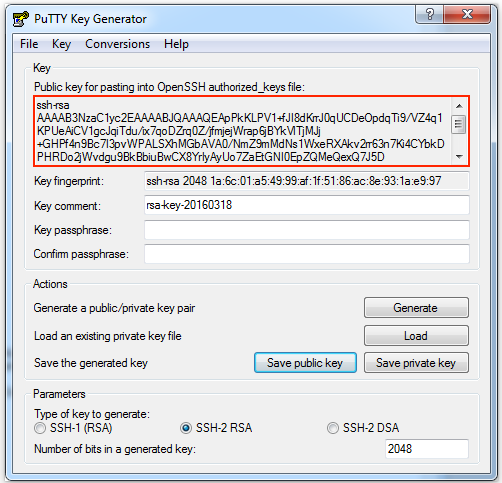Generate Public Key From Certificate Online
Several tools exist to generate SSH public/private key pairs. The following sections show how to generate an SSH key pair on UNIX, UNIX-like and Windows platforms.
- Enter the generated public key into the administrative interface of the ordered SSL certificate. Copy the entire content of the text file, view the details of the order and under Information about Public Key select Enter New Key. Make sure that SHA-2 is selected. If the Key is correct, the status in the interface will change from N/A to OK.
- I need to create a public/private key pair for a certificate request. I would like to use IIS. Once the certificate is signed I will be distributing it to multiple servers and therefor will need the private key.
- Public key is embedded in the SSL certificate and private key is stored on the server and kept secret. When a site visitor fills out a form with personal information and submits it to the server, the information gets encrypted with the public key to protect if from eavesdropping.
Dec 01, 2015 To generate a self-signed certificate file on a Windows system: You will need to have OpenSSL installed. Open a command prompt window and go to the directory you created earlier for the public/private key file. Generate an ed25519 SSH keypair- this is a new algorithm added in OpenSSH. Ssh-keygen -t ed25519 Extracting the public key from an RSA keypair. Openssl rsa -pubout -in privatekey.pem -out publickey.pem Extracting the public key from an DSA keypair. Openssl dsa -pubout -in privatekey.pem -out publickey.pem Copy the public key to the server.
Generating an SSH Key Pair on UNIX and UNIX-Like Platforms Using the ssh-keygen Utility
UNIX and UNIX-like platforms (including Solaris and Linux) include the ssh-keygen utility to generate SSH key pairs.

- Navigate to your home directory:
- Run the ssh-keygen utility, providing as
filenameyour choice of file name for the private key:The ssh-keygen utility prompts you for a passphrase for the private key. dvd rippen mac freeware download
- Enter a passphrase for the private key, or press Enter to create a private key without a passphrase:
Note: /office-2010-64-bit-product-key-generator.html.
While a passphrase is not required, you should specify one as a security measure to protect the private key from unauthorized use. When you specify a passphrase, a user must enter the passphrase every time the private key is used.
The ssh-keygen utility prompts you to enter the passphrase again.
- Enter the passphrase again, or press Enter again to continue creating a private key without a passphrase:
- The ssh-keygen utility displays a message indicating that the private key has been saved as
filenameand the public key has been saved asfilename.pub. It also displays information about the key fingerprint and randomart image.
Generating an SSH Key Pair on Windows Using the PuTTYgen Program
The PuTTYgen program is part of PuTTY, an open source networking client for the Windows platform.
Generate Public Key From Certificate
Generate Public Key From Certificate online, free
- Download and install PuTTY or PuTTYgen.
To download PuTTY or PuTTYgen, go to http://www.putty.org/ and click the You can download PuTTY here link.
- Run the PuTTYgen program.
- Set the Type of key to generate option to SSH-2 RSA.
- In the Number of bits in a generated key box, enter 2048.
- Click Generate to generate a public/private key pair.
As the key is being generated, move the mouse around the blank area as directed.
- (Optional) Enter a passphrase for the private key in the Key passphrase box and reenter it in the Confirm passphrase box.
Note:
While a passphrase is not required, you should specify one as a security measure to protect the private key from unauthorized use. When you specify a passphrase, a user must enter the passphrase every time the private key is used.
- Click Save private key to save the private key to a file. To adhere to file-naming conventions, you should give the private key file an extension of
.ppk(PuTTY private key).Note:
The.ppkfile extension indicates that the private key is in PuTTY's proprietary format. You must use a key of this format when using PuTTY as your SSH client. It cannot be used with other SSH client tools. Refer to the PuTTY documentation to convert a private key in this format to a different format. - Select all of the characters in the Public key for pasting into OpenSSH authorized_keys file box.
Make sure you select all the characters, not just the ones you can see in the narrow window. If a scroll bar is next to the characters, you aren't seeing all the characters.
- Right-click somewhere in the selected text and select Copy from the menu.
- Open a text editor and paste the characters, just as you copied them. Start at the first character in the text editor, and do not insert any line breaks.
- Save the text file in the same folder where you saved the private key, using the
.pubextension to indicate that the file contains a public key. - If you or others are going to use an SSH client that requires the OpenSSH format for private keys (such as the
sshutility on Linux), export the private key:- On the Conversions menu, choose Export OpenSSH key.
- Save the private key in OpenSSH format in the same folder where you saved the private key in
.ppkformat, using an extension such as.opensshto indicate the file's content.